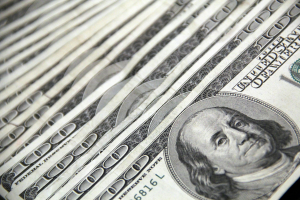If “tariffs” is President Trump’s favourite word, “safe havens” is traders’ darling (or could be). During times of uncertainty like the one we’re currently navigating, marked by the Trump administration’s reciprocal tariffs, safe havens are every trader’s assets of choice.
Typically, precious metals and government bonds display these qualities. As they tend to appreciate, while currencies and stock markets witness increased volatility, gold, silver, platinum, and 10-year US Treasuries provide the much-needed safety net traders need to mitigate high volatility.
The good news is that the same applies to some currencies. But how do you spot a safe-haven currency? Safe-haven currencies have several characteristics. First and foremost, these currencies come from economies with a track record of political stability and strong governance. Most importantly, these countries are well-known for their solid fiscal policies and financial markets, allowing for easy entry and exit without significantly impacting the currency’s value.
The usual safe haven suspects
Typically, the US dollar (USD), Swiss franc (CHF), and the Japanese yen (JPY) display safe-haven qualities, which makes them attractive during periods of economic turbulence. However, of all three, the US dollar suffered the most from tariff-led inflation fears.
Not only did the greenback fail to strengthen during this period, but on the contrary, it shed about 5% against the euro and the sterling and 6% against the yen since early April.
On April 28, EURUSD posted modest gains after the European session, hovering in the 1.135 – 1.140 area. While the broader technical setup remains open to further upside, the pair eyes 1.1354 (support) with an immediate correction in sight, followed by 1.1341 and 1.1230 further down. On the upside, the key resistance level to watch projects in the area of 1.1380, which, if materialised, could clear the way to further gains.
GBPUSD rallied on Monday, boosted by strong UK retail sales data, nearing 1.3400 amid USD pressure. The sterling outperformed the greenback by 0.65% as traders’ risk appetite improves. Expectations that the BoE would not be as dovish as previously estimated provided the necessary boost to the pound.
Meanwhile, USDJPY approached 142.00 during North American trading hours on Monday, facing heavy selling pressure amid renewed investor caution. As global trade woes erode confidence, demand for safe-haven currencies like the Japanese yen rises.
The USDCHF pair experienced similar pressures, trading near the low end of its daily range, following a sharp decline. Last seen around 0.82, the pair may well continue to drop, as traders rush to shore up some profits.
The pattern followed by each of these pairs points to the USD’s weakness and low performance as a safe haven. Amid these baffling swings between highs and lows, one question persists: Are there any competitors to the buck on the safe haven front?
The euro, a safe haven promise
In an article published by Euronews, Sylvain Broyer, Chief Economist EMEA at S&P Global Ratings, sounded the alarm about the euro’s rise as a safe-haven currency. However attractive this hypothesis may be, he notes, “it takes more than just fiscal stimulus.”
The recent market trends have contributed to the single currency’s perception as a safe haven. Capable of attracting capital in times of uncertainty or panic, as a safe haven, the euro holds great promise for the future.
While the euro’s role in the global economy strengthens, the safe haven arena is still dominated by the US dollar, which holds 58% of the official foreign exchange reserves, compared with the euro, with only 20%. In this context, the pressing question is whether this trend can last long enough to become the status quo.
According to Broyer, it can. From a foreign exchange viewpoint, the euro has the potential to appreciate to a fair value of $1.15 for €1. Sustaining this level depends on the European economy’s ability to increase domestic demand and reduce trade surplus.
Currently, the EU economy is heavily dependent on global trade. If the US decides to close its market to EU imports, the EU would face harsh competition from China in its domestic markets. Unlike the EU, China has an edge in terms of production scale, energy costs, business regulation, and technology.
To reduce its commercial dependencies, Europe must expand its domestic economy. Fuelled by Germany’s stimulus package, this process is underway, the economist highlights. The combined effects of Germany’s stimulus package and the increased defence spending could add a quarter point to the EU GDP in 2026, and potentially half a point in 2027 and 2028.
Yet it would take more than that for the single currency to outpace the buck as a safe haven. To rebalance economic growth and increase consumer interest in domestic products, Europe should start lowering internal trade barriers to US interstate trade levels. This would lift the GDP per capita by 7 points.
It may take some time until it materialises, though. Meanwhile, will you bet on a safe-haven euro?
Risk Warning: Contracts for Difference (CFDs) are complex financial instruments and may not be suitable for all investors. Trading CFDs involves substantial risks of losing your invested capital. It’s important to note that CFDs are a leveraged product, which means they can magnify both potential gains and losses. It’s crucial to understand that CFD traders do not possess ownership or rights to the underlying assets.








